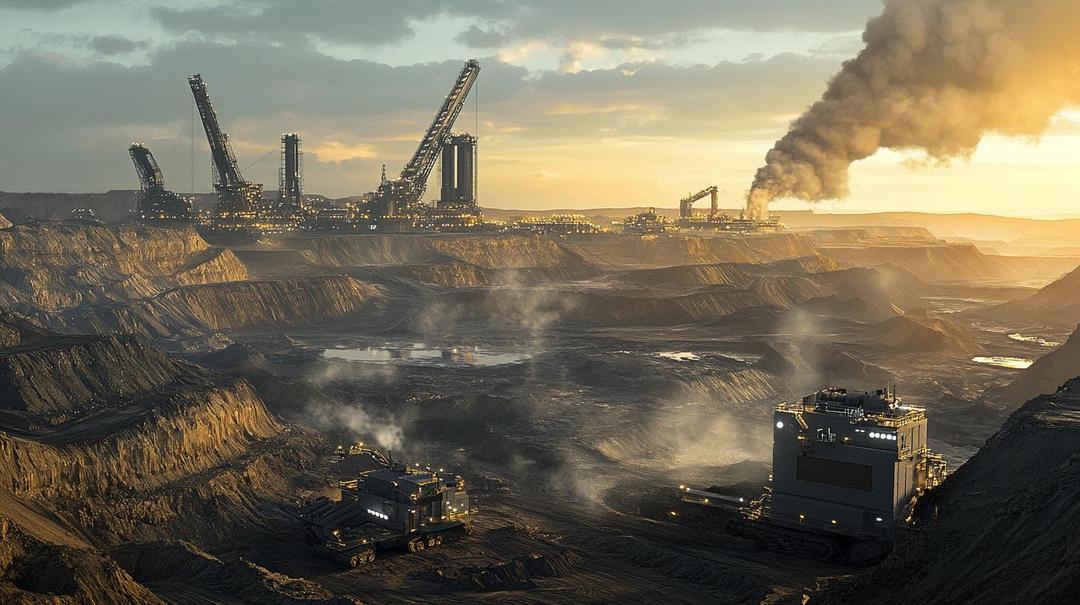From your smartphone to electric vehicles and even national defense systems, rare earth elements are everywhere! Did you know that China produces over 60% of the world’s rare earth elements while holding even larger reserves? That global dominance is why rare earths are often called the ‘new oil’ of the 21st century. Learn about the world of rare earth mining and its pivotal role in global trade.
Let’s dig in.
What's Inside
What Is Rare Earth Mining Global Trade?
Rare earth elements (REEs) are a group of 17 metallic elements with unique properties that make them critical to numerous high-tech and advanced industries. These elements, including lanthanides and scandium, are not actually “rare” in terms of abundance, but they are challenging to extract and process economically.
Key Applications Across Industries
REEs play a crucial role in multiple critical sectors:
- Electronics: Essential for smartphone and computer manufacturing
- Renewable Energy: Critical components in wind turbine generators and solar panel technologies
- Defense Technologies: Used in precision-guided weapons, communication systems, and advanced radar equipment
- Medical Devices: Integral to MRI machines, cancer treatment technologies, and medical imaging equipment
Who Are the Key Players in Rare Earth Mining and Global Trade?
The rare earth element market is dominated by a handful of countries, with China holding a near-monopolistic position in both production and processing.
Global Production Landscape
- China: Produces approximately 80% of the world’s rare earth elements
- United States: Significant reserves but limited processing capabilities
- Australia: Emerging as a major alternative production center
- Other key producers: Myanmar, Russia, and Brazil
Market Dynamics
The geopolitical tensions surrounding rare earth elements have transformed them into a strategic resource. China’s ability to restrict exports has created significant global supply chain vulnerabilities, prompting other nations to develop alternative sourcing strategies.
What Are the Environmental Impacts of Rare Earth Element Mining?
Rare earth mining presents substantial environmental challenges that cannot be overlooked.
Environmental Concerns
- Significant land degradation
- Water pollution from chemical extraction processes
- Radioactive waste generation
- High carbon emissions during extraction and processing
Case Study: China’s Environmental Challenge
China’s rare earth mining operations in regions like Baotou have resulted in severe environmental devastation, including toxic lakes and widespread ecosystem damage.
Supply Chain Challenges: How Secure Is Rare Earth Access?
The rare earth element supply chain is fraught with geopolitical and logistical complexities.
Key Vulnerabilities
- Concentrated production in limited geographic regions
- Potential for export restrictions and trade conflicts
- Limited processing infrastructure outside of China
- Increasing geopolitical tensions affecting trade relationships
Trends and Innovations Shaping the Future of Rare Earth Mining
Emerging Solutions
- Advanced recycling technologies
- Urban mining from electronic waste
- Development of alternative extraction methods
- Investment in more sustainable mining practices
Technological Innovations
- Biotechnology-based extraction techniques
- Advanced separation and processing technologies
- Artificial intelligence in mineral exploration (opens in a new tab)
- Reduced environmental impact extraction methods
Policy and Regulatory Landscape
Global Policy Trends
- Increased focus on sustainable mining practices
- Government incentives for domestic rare earth production
- Strategic national stockpiling initiatives
- Environmental regulation tightening
Balancing Profitability and Sustainability in Rare Earth Mining
Industry Evolution
- Growing emphasis on environmentally responsible extraction
- Development of circular economy approaches
- Investment in cleaner technologies
- Increased transparency in mining operations
The rare earth element industry stands at a critical intersection of technological innovation, environmental responsibility, and global economic strategy. Addressing the complex challenges will require collaborative, multinational approaches that balance economic needs with sustainable practices.
Conclusion
Rare earth elements are the backbone of modern industry and global trade. They power innovation, enable clean energy transitions, and fuel technological advancements. Yet, their mining and distribution come with challenges—from environmental degradation to geopolitical tensions. For industry professionals, policymakers, and investors, the rare earth market holds both opportunities and risks in 2025.
FAQs
What are the most common rare earth elements used today?
Neodymium (used in magnets), lanthanum (used in night-vision devices), and cerium (used in catalytic converters) are widely used in industries.
Why does China dominate the rare earth market?
China has vast reserves, lower production costs, and government policies that strategically prioritize rare earth mining and exports.
Are there environmentally friendly ways to mine rare earth elements?
Yes, technologies like bio-mining and advancements in recycling rare earths are emerging as more sustainable alternatives.
Why are rare earth elements essential for clean energy?
They’re critical for manufacturing wind turbines, solar panels, and electric vehicles, all of which are central to renewable energy solutions.
How are geopolitical tensions impacting the rare earth market?
Tensions between key players like China and the U.S. have led to supply chain risks, trade restrictions, and increased competition for alternative sources.


Dustin
Driven by a fascination with rare earth elements and their role in powering modern tech and engineering marvels. A true car and tech enthusiast, he loves exploring how these hidden heroes fuel our most exciting innovations.
You Might Also Like…